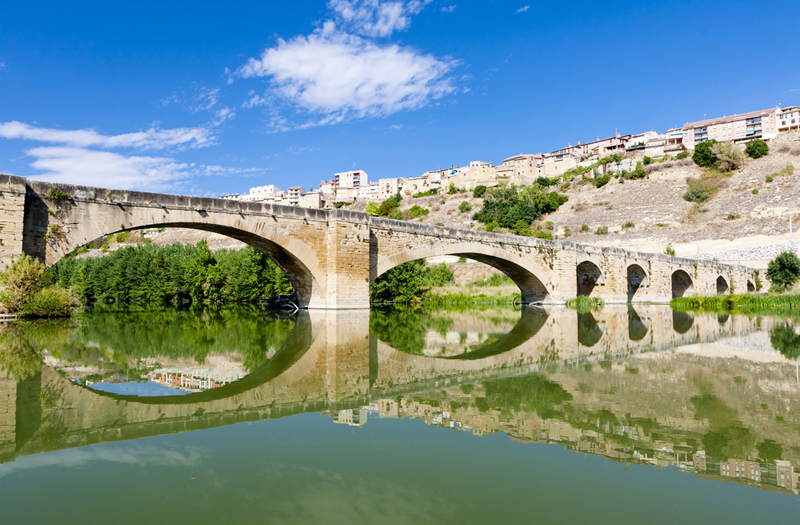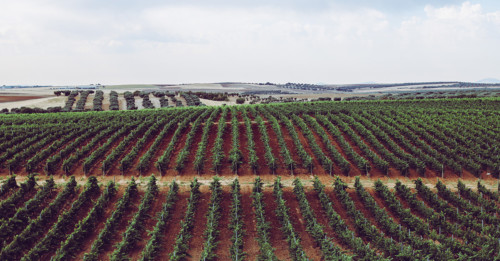Rioja is as age-worthy as the wines of Bordeaux and Burgundy, yet it flies under the radar compared to its more well-known peers. This means that a stellar bottle of age-worthy Rioja can be procured for far less than a similarly rated bottle of Bordeaux or Burgundy. Rioja wine takes its name, like many other wines made in the Old World, from the Rioja region where it is produced.
Rioja In 60 Seconds:
- The Rioja region is landlocked in North Central Spain and includes three sub-regions.
- Tempranillo, a red wine grape that’s indigenous to Spain, is the dominant grape in Rioja.
- Rioja wines are split into four classification levels: Genérico, Crianza, Reserva, and Gran Reserva.
- Wines from Rioja can be medium to full-bodied, with high tannins and rich flavors of dark berries, plum, tobacco, and herb.
Where is the Rioja Region?
Wines with a DOCa Rioja designation are made from grapes grown across three different autonomous communities in North Central Spain: La Rioja, Pais Vasco, and Navarra. The source of much confusion, DOCa Rioja doesn’t cover La Rioja in its entirety. The vineyards included in the DOCa designation are planted near the Ebro River in the northern section of the community, which spans 62 miles. About 69 percent of the grapes grown for Rioja DOCa wines are planted south of the Ebro in La Rioja. The remaining vineyards are found north of the river and split between the Pais Vasco province of Alava as well as Navarra.
Adding further confusion, DOCa designated vineyards are split into three distinct growing zones: Rioja Alavesa, Rioja Alta, and Rioja Oriental (formerly Rioja Baja). DOCa Rioja wines can be blended with grapes grown in two or more zones, although single-zone wines are also becoming popular.
What Does Rioja Taste Like?
Rioja is made from a blend of grape varieties, with Tempranillo being the dominant grape. Garnacha is typically included in the blend to add some fruitiness; Mazuelo (also known as Cariñena) and Graciano may also be included.
Wine from Rioja is known for its structure and tannins, similar to Cabernet Sauvignon, but it also has a fruity character. This makes it perfect for drinkers who love Cabernet but are also looking for the dominant cherry flavor that’s often present in wines made from Pinot Noir.

Rioja can also be vinified in white or rosé styles, though producers must obtain prior approval from the Consejo Regulador before releasing their wines to market. White Rioja is made primarily with Viura (Macabeo) along with other indigenous grape varieties. Though not native to the region, Sauvignon Blanc and Chardonnay became authorized grapes in 2007. Rioja rosé wines are made predominantly with Garnacha because of the variety’s inherent fruitiness.
The Different Styles of Rioja
The red wines of Rioja are split into four classification levels. Each classification indicates the amount of time the wine spent in oak (and in some cases bottle, too) and will be labeled clearly on the bottle. The four classifications are:
- Genérico (previously called Joven): This is a basic form of the wine and guarantees origin and vintage only. Genérico wines have no minimum aging requirements and are generally sold within the first or second year after harvest. Approximately 40 percent of Rioja wines fall under this category and are very youthful and fruity with fresh acidity.
- Crianza: For a wine to be labeled a Crianza, it must spend a minimum of one year in oak. Following its removal from barrel, the wine must spend at least another few months in the bottle before being sold. This level of Rioja is widely available on the American market and is incredibly affordable, usually retailing for around $15 or less. Rioja Crianza is fuller-bodied than Genérico, with notes of red and black fruit, toast, and leather.
- Reserva: These wines are made using the best grapes of a harvest, and are only produced during years that were considered to have enjoyed a good growing season. Rioja Reserva must age for a minimum of three years, with at least one of those in oak, and the rest in the bottle. Reserva wines generally show significant signs of aging, with subtle fresh fruit characteristics and more dominant notes of cigar box and dried fruit.
- Gran Reserva: This classification of Rioja is only made in years with exceptional growing seasons, and contains the highest quality of grapes from the harvest. Gran Reservas must be aged in oak for at least two years, and then spend at least three more years in bottle prior to release. Only two percent of Rioja wines are classified as Gran Reserva.
The Best Food to Pair with Rioja
While Rioja goes well with almost anything, younger wines from the region pair best with savory meats and strong cheeses. Regional specialities like Jamon Serrano (Spain’s version of Prosciutto), salty chunks of Manchego cheese, or a bowl of ripe green olives will instantly transport you to the region.
Rioja Crianza or Rioja Reserva, which can show significant secondary or tertiary notes, pair well with a hearty vegetable stew or red meat that’s been grilled or braised.
